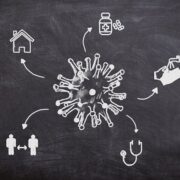STATEWIDE flu activity has reached high levels across California, which has the potential to add to an already concerning number of hospitalizations of children due to the spread of winter viruses including Respiratory Syncytial Virus (RSV), Influenza (Flu) and COVID-19.
State public health leaders are reminding Californians that masking in indoor public places, among other safety measures, is effective at slowing the spread of respiratory viruses that are making children, and the elderly, very sick.
“RSV and Flu, and now COVID-19, are on the rise – leading to the hospitalization of our youngest and most vulnerable Californians who need all of us to help protect them. So we’re reminding Californians about the effective mitigation and safety measures they can take to protect themselves and their loved ones, including getting the Flu shot, keeping up to date with their COVID-19 booster, and masking in indoor public places,” said State Public Health Officer and CDPH Director Dr. Tomás Aragón.
Hospitals across the state are working to add pediatric beds as quickly as possible, but the number of children who need hospitalization is currently outpacing their ability to expand. Hospitals typically have about 35 to 40% open pediatric intensive care unit beds, but that number is down to about 20% statewide. It’s even lower – below 12% – in some regions of the state.
While California guidance does not require masking except in some specific situations, masking is an effective way to help protect against RSV, the flu and COVID-19.
Here are the top 5 tips to protect against winter viruses:
Get vaccinated, boosted (and treated)
Flu shots and COVID-19 vaccines and boosters continue to be your best defense to limit severe illness and death – and you can get both at the same time.
Stay home if you’re sick, and test for COVID
Staying home when you’re sick slows the spread of flu, RSV and COVID-19. If you’re sick, remember to test for COVID and contact your doctor immediately if you’re positive to discuss treatment options. Treatments work best when started right after symptoms begin.
Wear a mask
There is no vaccine for RSV, so wearing a mask can significantly slow the spread and protect babies and young children who do not yet have immunity and are too young to wear a mask themselves. Wearing a mask in indoor public places is a good way to limit the spread of germs.
Wash your hands
Frequent handwashing, with soap and warm water – for at least 20 seconds, is an easy and effective way to prevent getting sick and spreading germs.
Cover your cough or sneeze
Remember to cough or sneeze into your elbow, your arm, or a disposable tissue to help prevent the spread of winter viruses. Just make sure to wash your hands or sanitize and dispose of your tissue after.
Here are four things to consider about masking in indoor public places:
What’s spreading in your community?
Winter respiratory viruses like Flu and RSV have been spreading across the state for weeks, and now COVID-19 cases are ticking up.
Why wear a mask?
Masks help slow the spread of respiratory viruses. Masks aren’t just for your own health – they can also play a significant role in protecting the health of those around you, especially those at higher risk of getting severely ill from RSV, the Flu or COVID-19. When attending an indoor public event, mask up for your friends, families, infants, young children, older adults, and other loved ones with pre-existing conditions or weakened immune systems.
But which mask do I wear?
If you’ve made the decision to wear a mask, great! To get the most out of your mask, pick one with good fit and filtration. The “Good, Better, Best” rule-of-thumb is surgical masks are good, KN95 or KN94 masks are better, and N95 are best.
Consider masking a statement of kindness
Still not sure you want to mask up? Remember you can never be sure if someone around you has a compromised immune system, is going through chemo treatment, or has asthma. Wearing a mask helps slow the spread of germs and shows kindness concern for other’s health and well-being.






